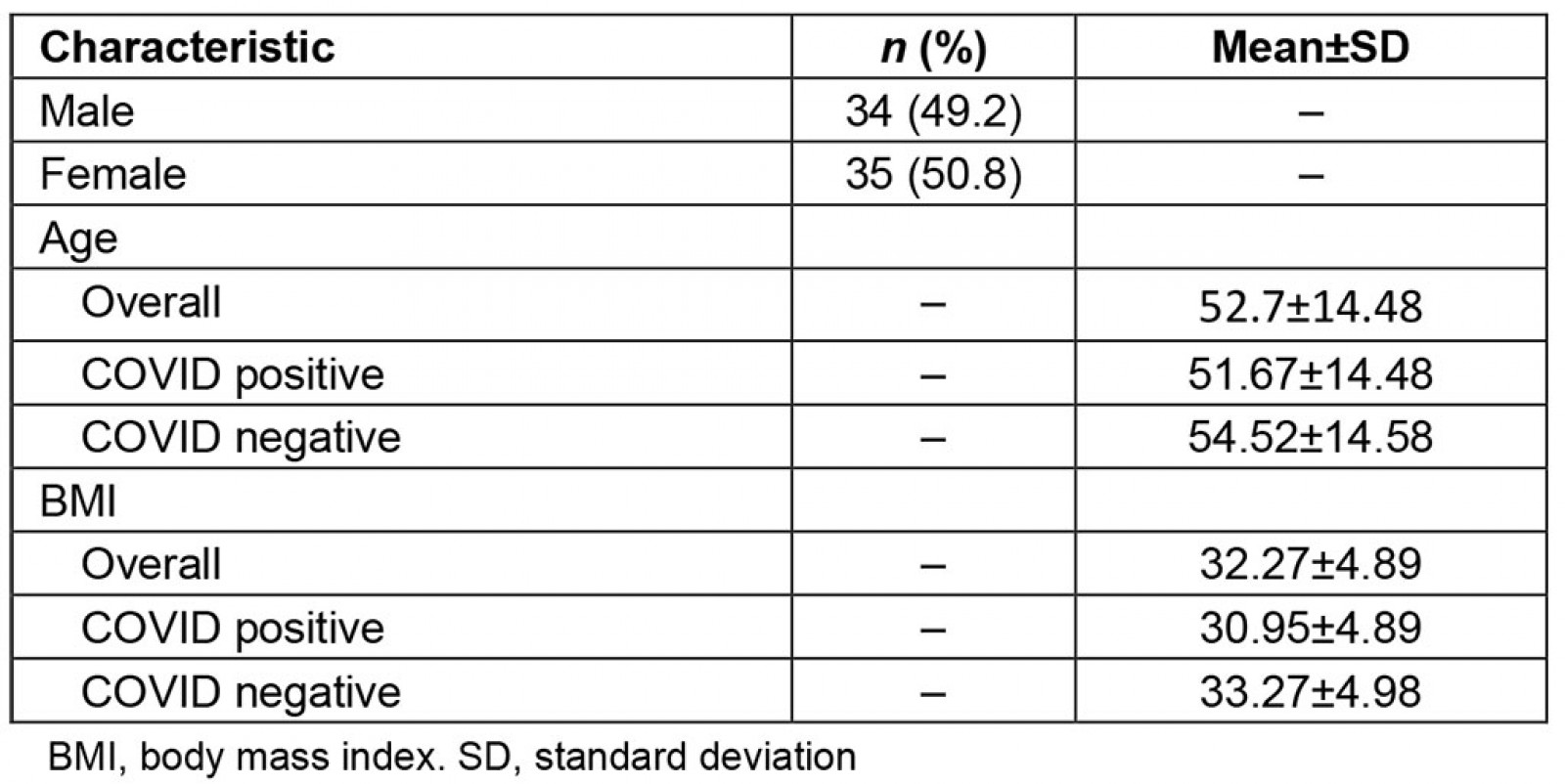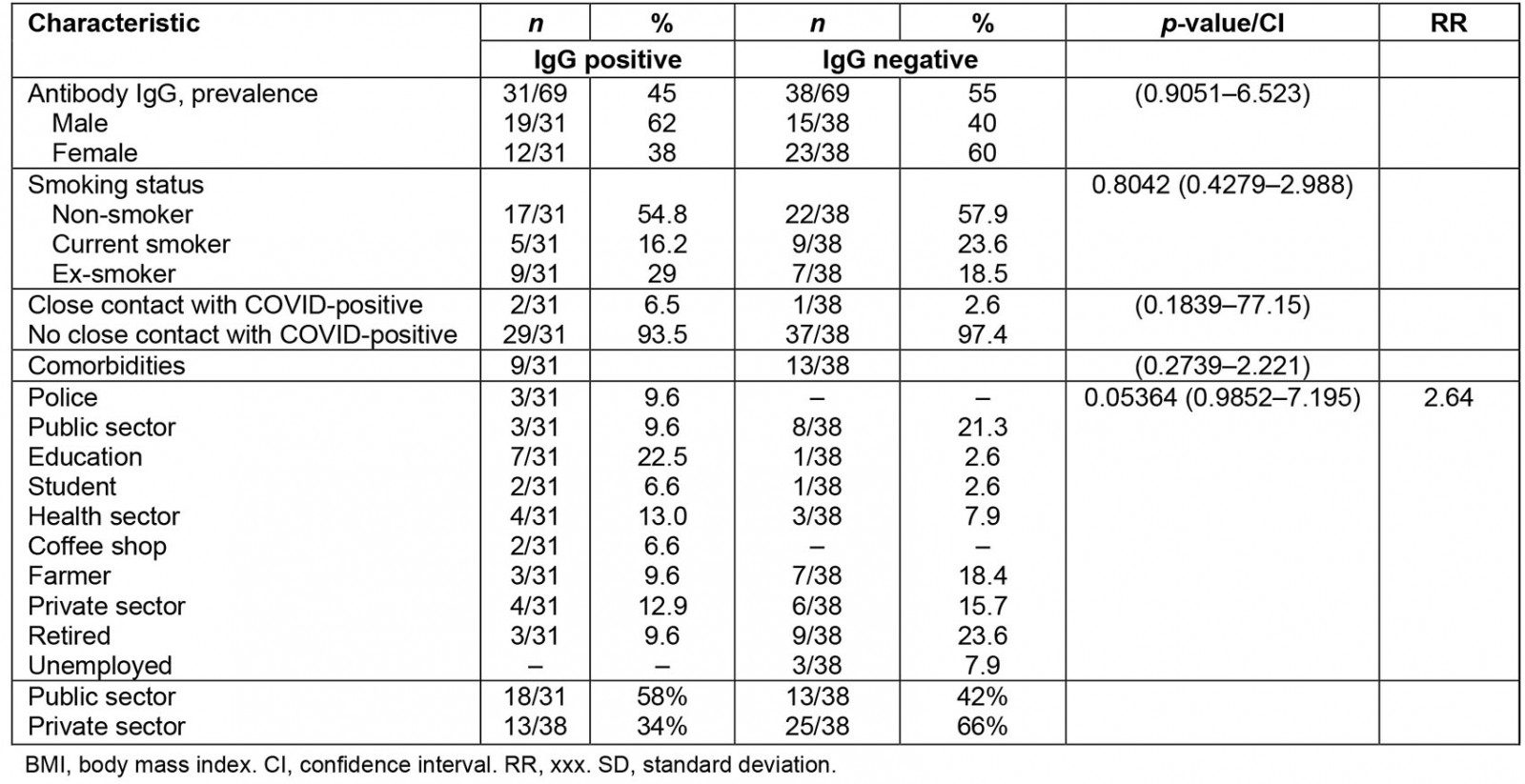Introduction
Coronavirus disease-19 (COVID-19), caused by the severe acute respiratory syndrome coronavirus 2 (SARS-CoV-2), impacts on workers and workplaces across the world have been dramatic; furthermore, the recent pandemic is both a global health crisis and an international economic threat1.
The disease, which appeared in Wuhan, China, in December 2019, quickly spread across continents and was declared a pandemic by WHO on 11 March 20202. As of 5 March 2021, COVID-19 had infected over 113 472 187 people and caused over 2 520 653 deaths globally3.
In the first wave of the pandemic in spring and summer of 2020, Greece had reported a small number of laboratory-confirmed cases of COVID infection in the general population and a small number of related deaths also.
Differences in age range and severity of the disease and the total number of deaths have been reported, in the comparative characteristics of the two waves. Official data from the Greek National Public Health Organization (EODY) show that the second wave of pandemic began early in October 2020 and dramatically rose during November 2020, with high morbidity and mortality rates4,5. Since the emergence of COVID-19 in December 2019, there has been a critical need to understand the prevalence of antibodies in the general population especially, after one year of the pandemic.
The aim of this study was to evaluate prevalence of SARS-CoV-2 infection based on diagnosis of IgG antibodies from blood serum in an observational descriptive cohort study in a semi-closed rural area of Greece.
Methods
A cross-sectional seroprevalence study was designed to measure the prevalence of IgG antibodies against novel coronavirus in rural areas in Greece after the second pandemic wave. A surveillance program was conducted by the municipality of Deskati on 29 January 2021 with the University of Thessaly. The residents of Deskati were invited to participate in the study. According to the Hellenic Statistical Authority the total population of the municipal of Deskati was 3598 residents.
In this study, we used a quantitative SARS-CoV-2 IgG lab-based serology test, chemiluminescent microparticle immunoassay (Abbot, ARCHITECT I System; https://www.corelaboratory.abbott/int/en/offerings/segments/infectious-disease/sars-cov-2). The sensitivity of the method is 99.9% and specificity 100% for detecting the IgG antibody, a positive predicted value of 92.11% (95% confidence interval (CI) 85.87–95.73) and a negative predicted value of 99.97% (95%CI 99.76–100.00). Three hundred and ninety civilians participated and were examined for antigens of SARS-CoV-2 with a sample rapid test (nasopharyngeal/oropharyngeal exudate). The participants were also invited to participate voluntarily with blood serum for IgG antibodies against SARS-CoV-2, and 69 of them responded to the invitation.
Ethics approval
The Ethics Committee of the University Hospital of Larissa approved the study (protocol number 2800-01/11/2020) and all the participants provided written informed consent.
Results
The present study recorded a high prevalence of COVID-19 infection among the 69 participants. Thirty-one of these (45%) were found to be positive for SARS-CoV-2 IgG antibodies. Nineteen of the positive participants were male and 12 were female (p=0.07901). Of the 31 seropositive participants, 29 reported that they didn’t have any known close contact with COVID-19 patients (p=0.5088). Logistic regression analysis showed that the participants working in the public sector were at higher risk of COVID-19 infection in comparison to their counterparts in the private sector (p=0.05364), (relative risk 2.64; 95%CI 1.001–7.086) (Tables 1, 2).
Table 1: Characteristics of study participants (n=69)
Table 2: SARS-CoV-2 IgG antibody prevalence, municipality of Deskati, Greece (n=69)
Discussion
This study aimed to evaluate the prevalence of SARS-CoV-2 infection based on the prevalence of anti-SARS-CoV-2 IgG antibodies in an observational descriptive cohort study in the semi-closed rural area of Deskati, dated at the end of the second pandemic wave. According to Maltezou et al and data retrieved from the national database of SARS-CoV-2 infections, early measures kept the first pandemic wave in Greece at a relatively low scale6. Because the incidence of diagnosed cases increased in the second wave of the COVID-19 pandemic, it is important to understand the degree to which employment in the essential service sectors (public and private) represents the risk of infection. It is also important to note that workplace outbreaks represent COVID-19 cases where transmission likely occurred at the workplace. The reported morbidity and mortality of COVID-19 during the second wave of the pandemic, which started in October 2020, in Greece were among the highest in Europe, with many deaths and regions with increased incidence of COVID-197.
Our study presents high seroprevalence of SARS-CoV-2 in the municipality of Deskati, Greece (45%) for a semi-closed rural population after two waves of the COVID-19 pandemic. The high seroprevalance level supported by the morbidity and mortality numbers was announced by the National Public Health Organization and evident in the global data8. This is in contrast to previous studies in Greece demonstrating low seroprevalence levels in the general population7 and the health professions population9.
A second important finding of the present study is the statistically significant difference between public sector employees compared to their private sector counterparts, in contrast with a study from Peru where healthcare workers in the private sector had a higher turnover intention than those in the public sector10.
One of the sectors that has been the most affected since the onset of the health emergency has been pre-primary, primary and secondary education. Education has taken centre stage with the demand for students to continue to be schooled. In the analysis of the cases from the public sector, we found that the majority (9/31, 29%) were teachers and students. Data from Canada reported increased cases in education settings in Ontario since the previous September, with 70% of these among students, 15% among staff and 15% not specified. Over this same time period (September–December 2020), 2227 COVID-19 cases were attributed to outbreaks in education settings11.
The findings of the present study seem to support the hypothesis that personal hygiene and protection measures and physical distancing restrictions were not followed and that the level of knowledge of the community about COVID-19 remained low. In addition, a number of factors may have contributed to enhancing the risk of infection with SARS-CoV-2 in the municipality of Deskati in the second pandemic wave. The participants in the personal phone interview after the results of the present study reported that the universal use of face masks was discouraged for the residents of Deskati after the low incidence of COVID -19 in Greece in the first pandemic wave. A probable factor in the high prevalence of COVID-19 in participants in the public education sector were the ceremonies organised in these facilities for the annual national celebration day on 28 October. The vast majority of the patients reported that they did not have known close contact with a person with symptoms of COVID-19. That enhanced our hypothesis for lack of personal hygiene measures.
The present study has several limitations. The small number of participants is not representative of the general population. Our data were collected in a small municipality in a rural area of Greece, and cannot be generalised to other areas of the country. Another bias of the present study could be that as the blood test was voluntary, only people who were worried that they had COVID-19 would consent to a blood test, hence the prevalence may appear higher. In addition, a significant limitation of this study was the small number of participants solely from the community of Deskati; to achieve accurate results from seroprevalence studies recruiting a representative sample of the population of interest is important.
Conclusion
The present study presents data with high prevalence for COVID-19 in a rural area in Greece and was conducted at the end of the second pandemic wave. Our findings report increased prevalence of COVID-19 infection in the public sector and especially in primary education settings. Our results might help to understand the characteristics of this second wave and the behaviour and danger of SARS-CoV-2 in rural areas in Greece and Europe generally. Further studies are needed to confirm our findings.
Acknowledgements
We would like to thank the mayor of the municipality of Deskati and the residents for their participation in the present study.
References
You might also be interested in:
2010 - A tribute to John A J MacLeod
2009 - The changing nature of nursing work in rural and small community hospitals


